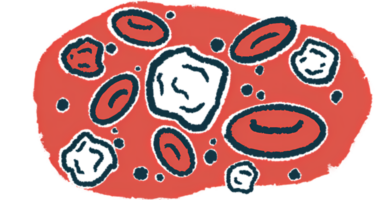#ECTRIMS2018 – Switching to Tysabri Leads to Fewer Relapses and Disability than Gilenya, Study in RRMS Patients Finds

Patients with relapsing-remitting multiple sclerosis (RRMS) who switch to Tysabri (natalizumab) after relapses on first-line treatment with other medications show greater relapse reduction and less disability progression than those switching to Gilenya (fingolimod), according to a real-world study.
The research, “Comparative effectiveness of switching to natalizumab or fingolimod after relapse on first-line relapsing-remitting multiple sclerosis therapy: propensity score matching analysis from the MSBase registry,” was presented Oct. 10 at the 34th congress of the European Committee for Treatment and Research in Multiple Sclerosis (ECTRIMS) in Berlin, Germany.
Tim Spelman, from Monash University and Alfred Hospital, in Melbourne, Australia, presented the data.
RRMS patients who relapse while on first-line treatment with formulations of interferon — such as Avonex (by Biogen), Rebif (by EMD Serono), and Betaferon/Betaseron by Bayer) – glatiramer acetate (Copaxone by Teva Pharmaceuticals), dimethyl fumarate (Tecfidera by Biogen), or teriflunomide (Aubagio by Sanofi Genzyme), collectively known as “BRACETD,” may benefit from switching therapies.
However, head-to-head comparisons of switching to Biogen’s Tysabri or Novartis’ Gilenya are lacking.
Aiming to address this gap, a team from Australia, Czech Republic, Spain, Italy, Canada, Portugal, Turkey, and Belgium compared the effectiveness of switching to either medication after one or more relapses in RRMS patients on BRACETD.
The patients were selected from the MSBase Neuro-Immunology Registry, which currently contains 61,898 patient records from 128 clinics in 34 countries.
Participants were divided into groups and subgroups based on the number of relapses in the year before switching treatment. Group 1 had one or more relapses (all the patients). Out of that, group 2 had two or more relapses, group 3 had only one relapse, and group 4 included patients with one relapse in the prior year but one or more in 12-24 months prior to switching (patients with persistently active disease).
The study’s primary outcome was the annualized relapse rate (ARR) — the number of confirmed relapses per year. Time to first relapse, 24-week confirmed disability progression (CDP), and 24-week-confirmed disability lessening were also analyzed. Patients were followed up upon for at least 2.6-3 years post-switch.
Results showed that ARR was significantly lower with Tysabri than with Gilenya. Although this was observed across all groups, patients with more than one relapse (group 2) showed a greater ARR reduction than those receiving Gilenya.
“Across all our cohorts, patients who switched to natalizumab [Tysabri] vs fingolimod [Gilenya] had statistically significant reductions in ARR [annualized relapse rate],” Spelman said in the presentation, adding that the team saw “a most pronounced effect of 36% reduction for patients with two or more relapses on a BRACETD therapy in the prior year.”
Time to first relapse was also significantly lower with Tysabri compared to Gilenya, especially in groups 2 and 3. No significant differences were found in group 4.
Patients treated with Tysabri in groups 1 and 2, but not 3, showed significant disability lessening compared to those receiving Gilenya. In contrast, no difference in CDP was found in any of the groups.
According to the team, the results suggest “that patients who relapse while on BRACETD have significant ARR reductions and [disability lessening] when switching to [Tysabri] vs [Gilenya].”
Spelman said these results “may provide insight into treatment heterogeneity” in MS, and into their potential effect in patients treated in real-world settings through comparisons of drug effectiveness that can ultimately support health technology assessment (HTA) decision making.
Of note, 18 of the study’s authors received speaker honoraria, consulting fees, research funding, and/or travel support from Biogen and/or Novartis, while a subset served on advisory boards for either or both companies.






